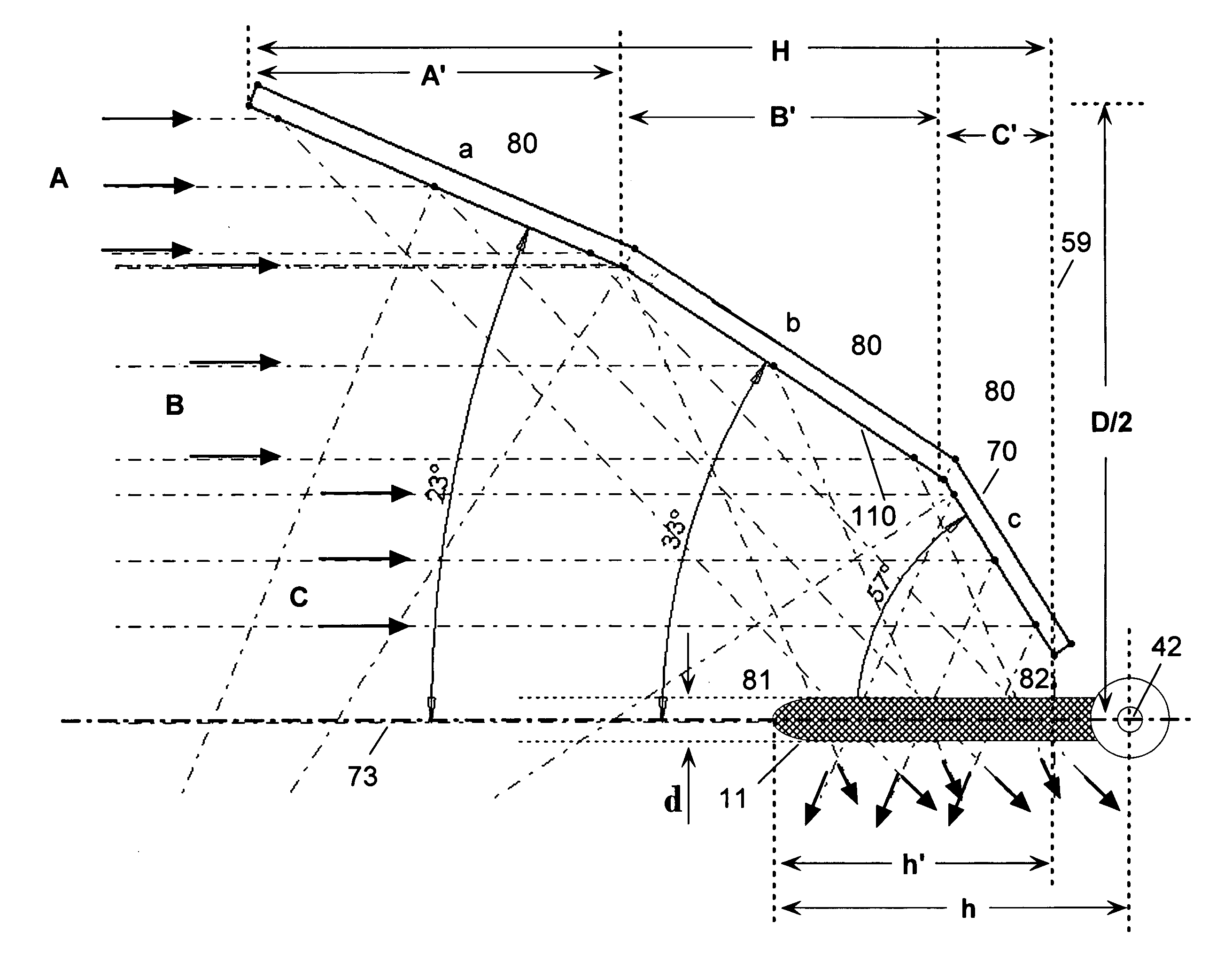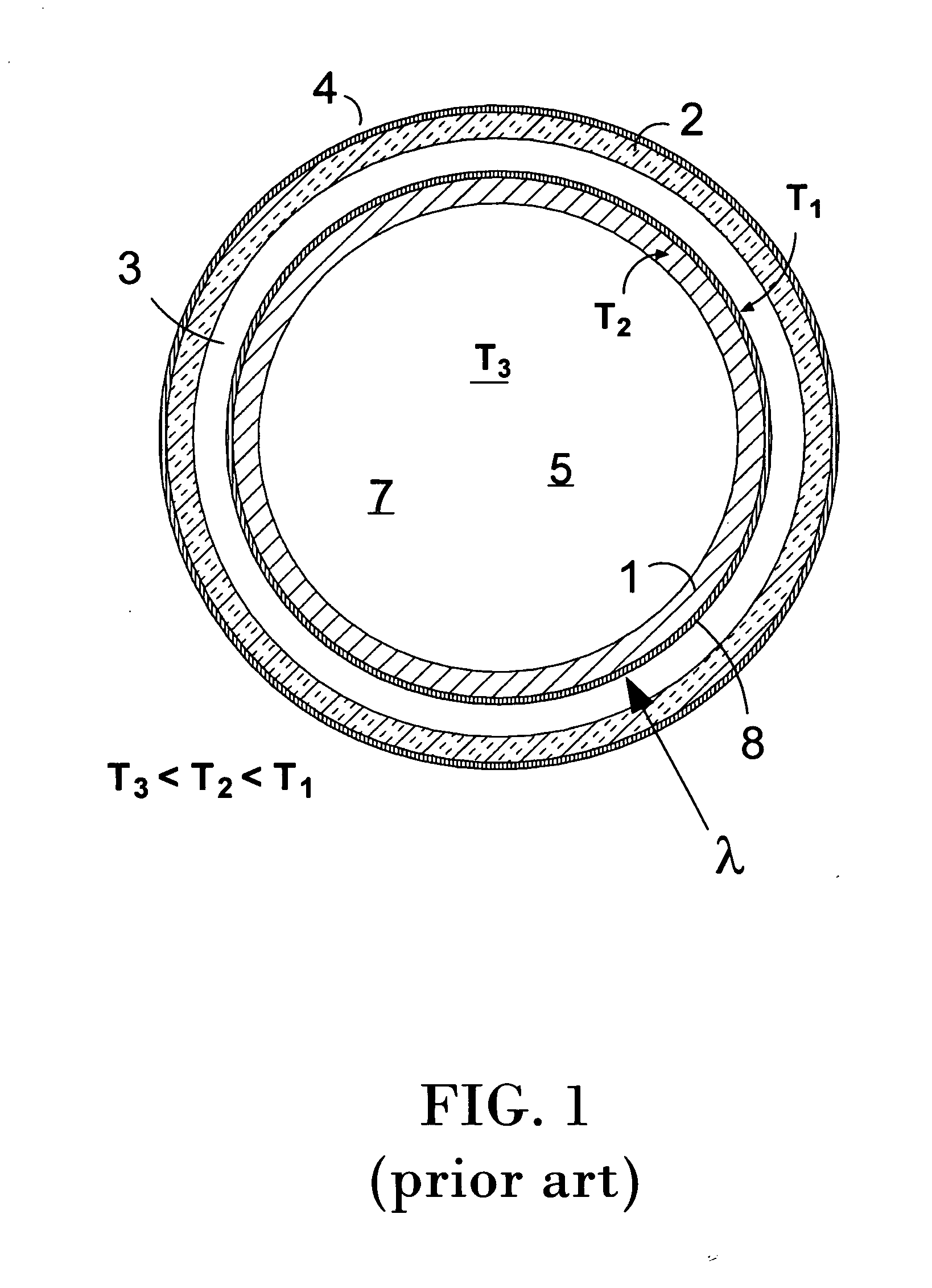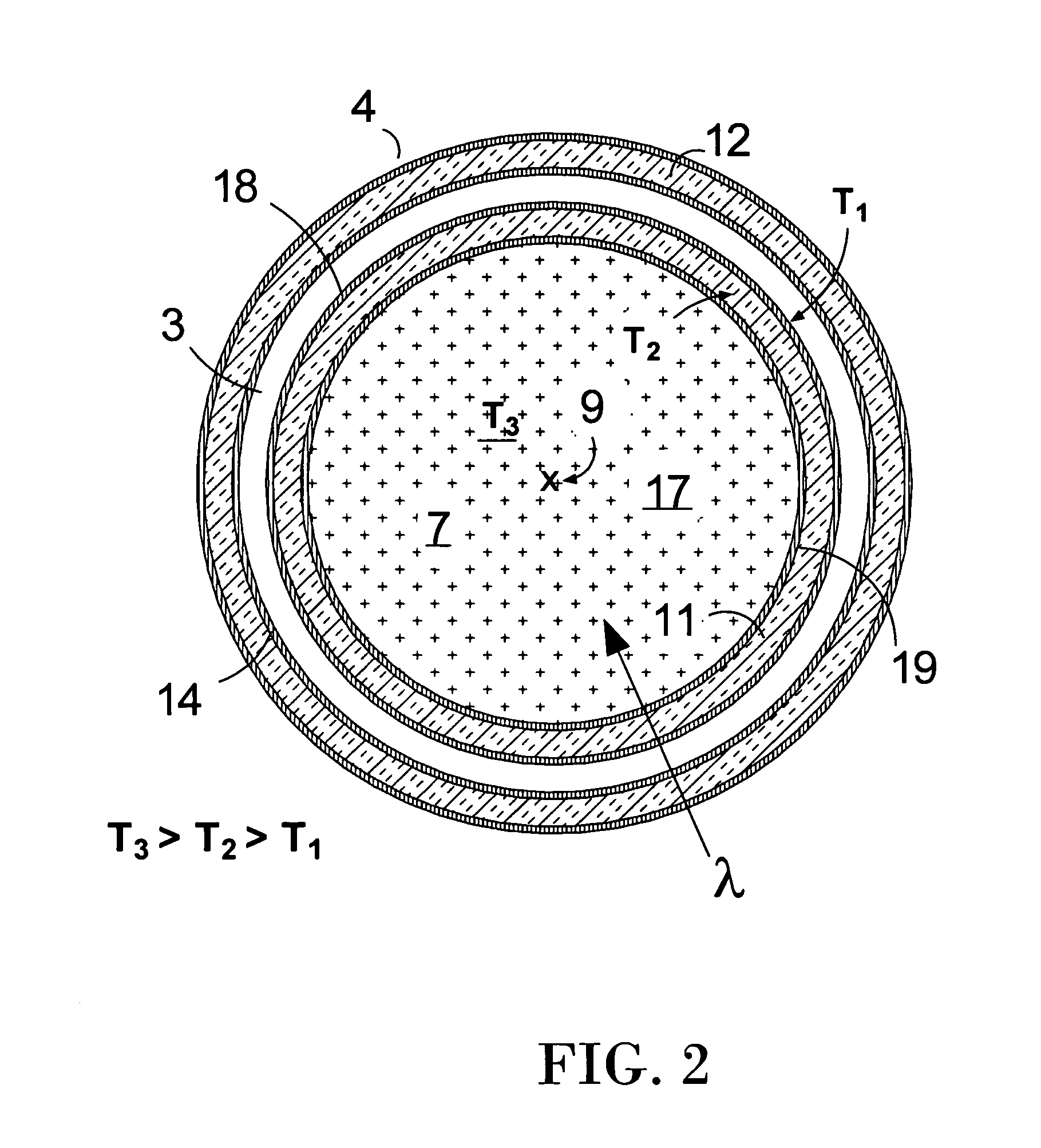Solar receiver and associated energy conversion apparatus
a technology of solar receiver and energy conversion apparatus, which is applied in the direction of solar heat systems, lighting and heating apparatus, pv power plants, etc., can solve the problems of significant diminishing the ability of the system to transfer heat into the working fluid, poor thermal conductivity of the materials system, poor thermal conductivity of the materials, etc., to achieve continuous improvement of absorption properties, maximum temperature gradient, and time-of-day and time-of-year changes of optical absorption properties of the heat transfer fluid
- Summary
- Abstract
- Description
- Claims
- Application Information
AI Technical Summary
Benefits of technology
Problems solved by technology
Method used
Image
Examples
Embodiment Construction
[0077]A receiver tube of the prior art, in FIG. 1, typically is provided with receiver tube (1) having low-emissivity outer coating (8), with such outer coating typically designed to simultaneously maximize absorption of solar wavelengths (typically 350-2000 nm, designated by lambda, λ). The receiver tube itself is typically a relatively high-temperature alloy, such as a stainless steel or other such metallic alloy. The receiver tube typically resides in a vacuum enclosure provided by an integral vacuum barrier tube (2) that is transmissive to the solar spectrum (e.g. borosilicate glass) and separated from the receiver tube by a vacuum space (3) providing thermal insulation. The vacuum barrier tube typically has an anti-reflective outer coating (4). The absorbing coating has many embodiments in the prior art, though cermets and other such composite coatings have become favored for intermediate-temperature applications, where receiver surfaces operate in the 300-1000 C range.
[0078]Be...
PUM
 Login to View More
Login to View More Abstract
Description
Claims
Application Information
 Login to View More
Login to View More - R&D
- Intellectual Property
- Life Sciences
- Materials
- Tech Scout
- Unparalleled Data Quality
- Higher Quality Content
- 60% Fewer Hallucinations
Browse by: Latest US Patents, China's latest patents, Technical Efficacy Thesaurus, Application Domain, Technology Topic, Popular Technical Reports.
© 2025 PatSnap. All rights reserved.Legal|Privacy policy|Modern Slavery Act Transparency Statement|Sitemap|About US| Contact US: help@patsnap.com



